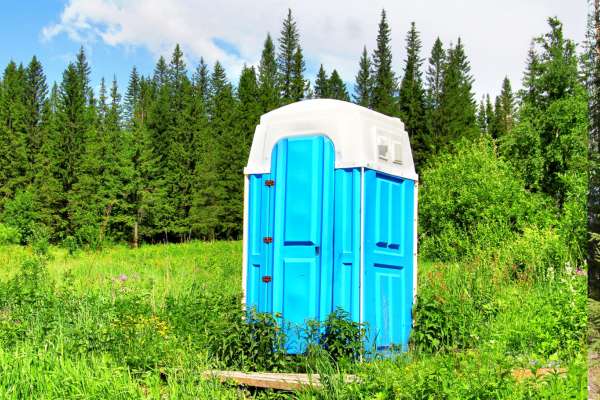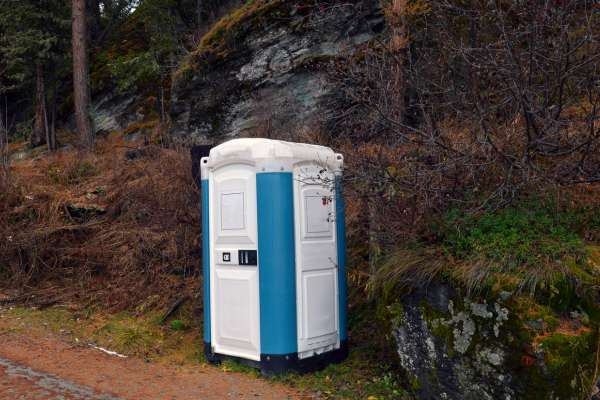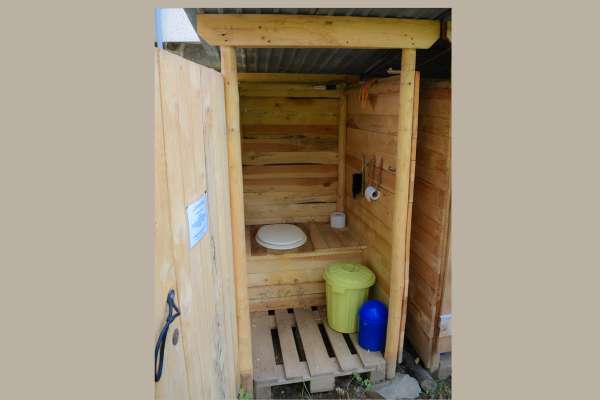Composting toilets represent an innovative and sustainable approach to waste management, offering An eco-friendly alternative to traditional flush toilets. As environmental consciousness continues to grow, understanding the mechanics of how composting toilets work becomes increasingly relevant. These systems utilize natural processes to transform human waste into nutrient-rich compost, eliminating the need for water-intensive flushing and reducing The environmental impact associated with conventional sewage treatment. In this exploration, we will delve into the intricate workings of it, shedding light on their mechanisms and highlighting their role in promoting ecological responsibility and resource conservation.
What Are Composting Toilets?

Composting toilets are innovative sanitation systems designed To transform human waste into nutrient-rich compost through natural decomposition processes. Unlike conventional flush toilets, which rely on water-intensive mechanisms and centralized sewage systems, biological toilets operate by allowing organic matter to break down aerobically. These systems facilitate the conversion of solid waste into compost, a valuable material that can be safely used as fertilizer For non-edible plants. Biological toilets are especially appealing for their water-saving characteristics and their ability to function In diverse settings, providing A sustainable solution to decentralized waste management.
How Often Do Composting Toilets Need Maintenance?
The maintenance requirements of it are generally lower compared to traditional flush toilets. However, regular attention is still essential to ensure optimal performance. The frequency of maintenance depends on factors such as the size of the compost chamber, the number of users, and the specific design of the system. Generally, biological toilets may require periodic turning or stirring of the compost to enhance decomposition. Monitoring and adjusting moisture levels in the compost chamber and adding bulking agents, such as sawdust or coconut coir, are common maintenance tasks. While the intervals between maintenance activities are longer than those of conventional Luxurious Toilet Seats, understanding and adhering to recommended protocols are vital for sustained efficiency.
Are Composting Toilets Suitable For All Climates?

Composting toilets exhibit versatility in adapting to various climates, making them suitable for a wide range of environments. These toilets can effectively operate in arid deserts, humid tropical regions, and even colder climates with proper adjustments. In colder settings, insulation and additional heating elements may be necessary to maintain optimal microbial activity and decomposition. Conversely, in warmer climates, proper ventilation becomes critical to prevent odors and ensure efficient compost. This adaptability highlights the suitability of biological toilets for diverse climatic conditions, reinforcing their role as a sustainable and inclusive solution to sanitation challenges.
1. Components Of Composting Toilet

Composting toilet consist of several key components that work together to facilitate the composting process. The toilet bowl is specially designed to separate liquids from solids, directing urine into a separate container while allowing solid waste to accumulate in the composting chamber. The compost chamber itself houses the decomposing organic matter, where aerobic bacteria and other microorganisms facilitate the breakdown of waste into compost. A ventilation system ensures an oxygen-rich environment, promoting the activity of beneficial microorganisms. Some systems may also include features like mixing mechanisms or heating elements to enhance compost efficiency. Understanding these components is crucial for users to effectively operate and maintain biological toilets.
2. Working Mechanism

The working mechanism of composting toilet revolves around harnessing natural processes to transform human waste into a valuable resource. When an individual uses a composting toilet, solid waste accumulates in a designated composting chamber, while liquid waste is typically diverted into a separate container. The presence of aerobic bacteria and other microorganisms in the compost chamber initiates the decomposition process. Adequate ventilation ensures an oxygen-rich environment, facilitating the breakdown of organic matter into compost. As the compost process progresses, the end result is a nutrient-rich material that can be safely used as fertilizer for non-edible plants, closing the loop on sustainable waste management.
3. Advantages Of Composting Toilets

It offer a myriad of advantages that contribute to both environmental conservation and practical benefits. One of the most significant advantages Is their water-saving nature, as they eliminate The need for traditional flushing, reducing water consumption significantly. Biological toilets operate off-grid, making them ideal for remote locations or areas with limited access to water and sewage infrastructure. Furthermore, The nutrient-rich compost produced can be utilized for gardening, promoting A sustainable and circular approach to waste management. These toilet also mitigate the need for energy-intensive sewage treatment, lowering the overall environmental impact of human waste disposal.
4. Types Of Composting Toilets
Composting toilet come in various types, each designed to meet specific needs and preferences. Self-contained units integrate the composting chamber, toilet bowl, and ventilation system into a single compact structure, making them suitable for smaller spaces or mobile applications. Central compost units, on the other hand, separate the toilet fixture from the compost chamber, allowing for greater flexibility in installation. Batch systems involve periodic emptying of the compost chamber once it reaches capacity, while continuous systems allow for a continuous composting process. Each type caters to different user requirements and installation scenarios.
5. Installation And Maintenance

Installing a composting toilet involves considerations such as proper ventilation, electrical requirements (if applicable), and space for the composting chamber. Manufacturers typically provide guidelines for installation, and professional installation may be recommended for more complex systems. Maintenance involves regular checks on the composting chamber’s moisture levels, occasional turning or stirring of the compost, and the addition of bulking agents to optimize the composting process. While composting toilets generally require less maintenance than traditional systems, understanding and adhering to specific maintenance protocols are crucial to ensure their continued efficiency and longevity.
6. Common Misconceptions
Despite the environmental and practical benefits of it, several common misconceptions surround their use. One prevalent myth is the notion that biological toilets emit foul odors. In reality, well-designed systems with proper ventilation effectively control odors, ensuring a pleasant restroom experience. Another misconception involves the belief that composting toilet are unsuitable for cold climates. While adaptations may be necessary, such as insulation or additional heating, biological toilet can indeed function efficiently in colder environments. Dispelling these misconceptions is crucial for fostering broader acceptance and understanding of composting toilet technology.
7. Applications In Different Settings
Composting toilets find versatile applications in various settings, catering to the diverse needs of both urban and rural environments. In off-grid or remote locations where conventional sewage infrastructure is impractical, biological toilets provide a sustainable and decentralized waste management solution. Moreover, they are increasingly being incorporated into eco-friendly homes and sustainable building designs. In recreational vehicles and boats, it offers a space-saving and water-efficient alternative. The adaptability of biological toilet makes them suitable for a wide range of settings, contributing to more sustainable sanitation practices globally.
8. Addressing Challenges

While composting toilet offer numerous benefits, challenges such as public perception, regulatory frameworks, and technological barriers still exist. Overcoming stigma and misinformation through education is crucial for wider acceptance. Addressing regulatory challenges involves advocating for supportive policies that acknowledge the benefits of biological toilet and their role in sustainable sanitation. Additionally, ongoing technological advancements can address concerns related to efficiency, odor control, and user-friendliness, further enhancing the overall acceptance and effectiveness of composting toilet systems.
9. Future Trends In Composting Toilets

As environmental awareness continues to grow, the future of it appears promising. Anticipated trends include the integration of smart technologies for monitoring and optimizing composting processes. Innovations in composting toilet design may lead to more compact and aesthetically pleasing units, encouraging broader adoption in residential settings. Collaborations between manufacturers, policymakers, and environmental advocates may also drive the development of standardized regulations and incentives, further promoting the widespread implementation of biological toilets as a sustainable sanitation solution.
Conclusion
Composting toilets represent a sustainable and forward-thinking approach to waste management, offering a range of environmental, practical, and economic benefits. While overcoming misconceptions and addressing challenges remains essential. The increasing adoption of biological toilet across diverse settings underscores their potential to revolutionize how we approach sanitation. As technology advances and societal attitudes shift towards greater environmental consciousness, composting toilet are poised to play A pivotal role In shaping the future of sustainable waste management practices. Embracing this eco-friendly alternative can contribute significantly to reducing water consumption, lowering environmental impact. And promoting a more sustainable and resilient global sanitation infrastructure.


